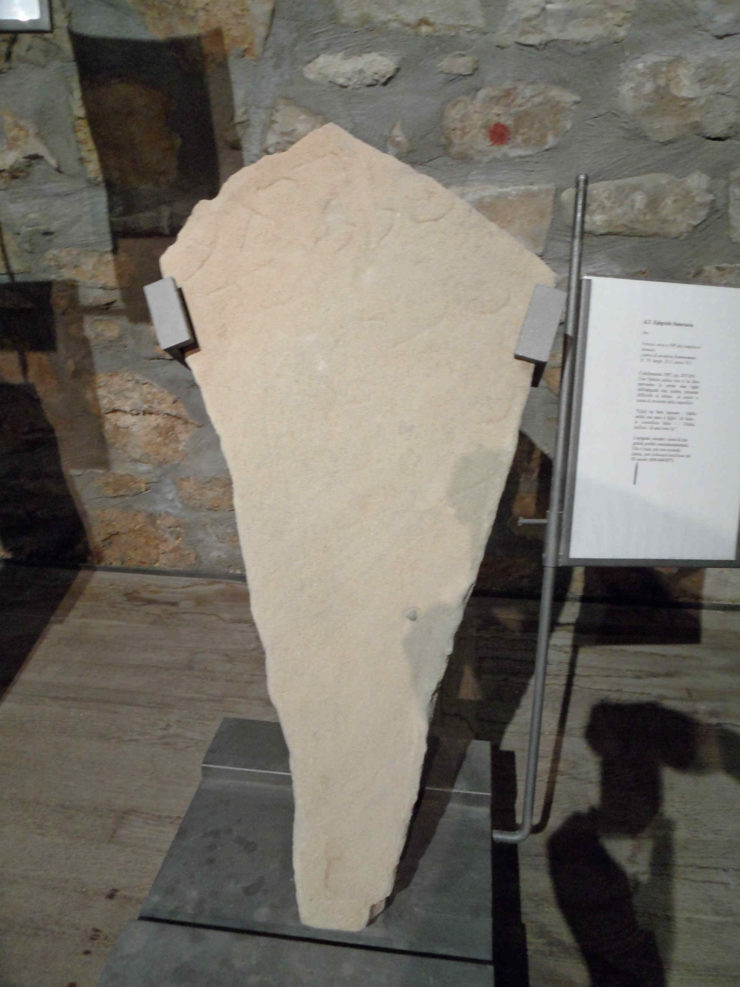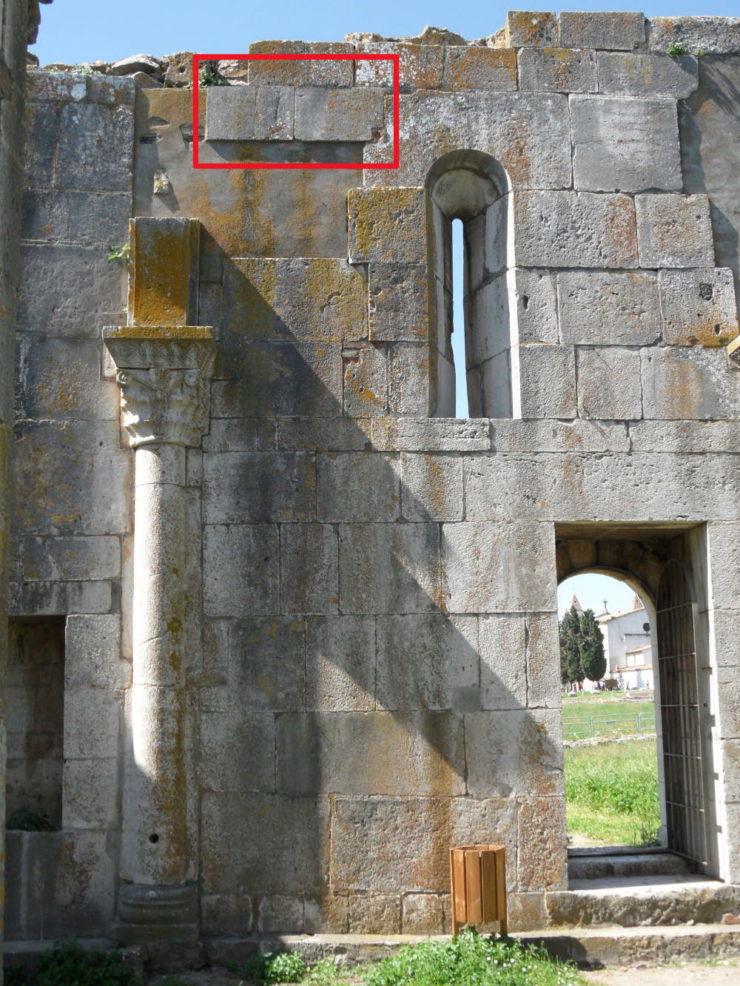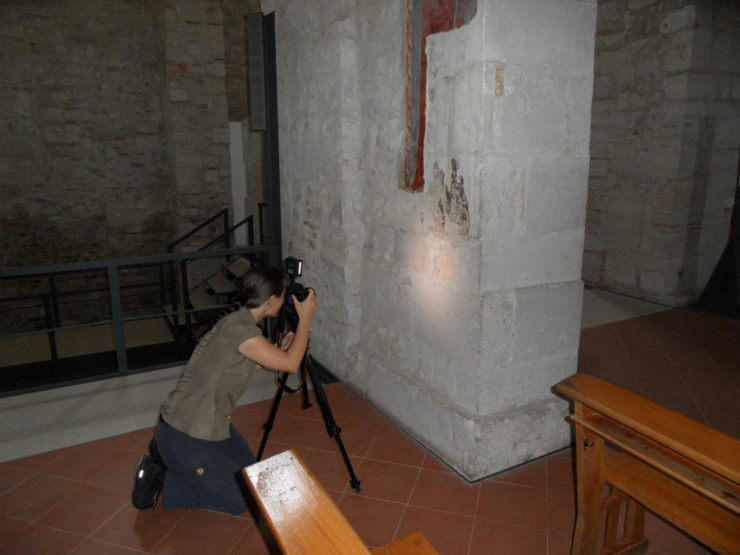3D Pilot Project in Venosa
In 2011 Leonard V. Rutgers was awarded a Rothschild Foundation grant for conducting a pilot project in the town of Venosa, Italy. The aim of the project was to document three-dimensionally Jewish funerary inscriptions dating back to the early Middle Ages (ca. ninth century CE). These inscriptions, engraved in Hebrew on stone blocks, have been reused in a later period, and have been embedded in the walls of the Santissima Trinità church complex in Venosa. Work was conducted on site in April and May of 2012. 3D documentation was performed by Irmengard Mayer of the Technical University of Vienna. The epitaphs are currently under study as part of a project conducted by Ortal-Paz Saar.

Santissima Trinità medieval church complex, Venosa, Italy. Photo L.V. Rutgers
Time, weather, and human hands have taken their toll on the texts, and they are often very eroded. The project intended to check whether a three dimensional (3D) documentation of the stones could enhance the visibility of the Hebrew text, and consequently make it more legible.
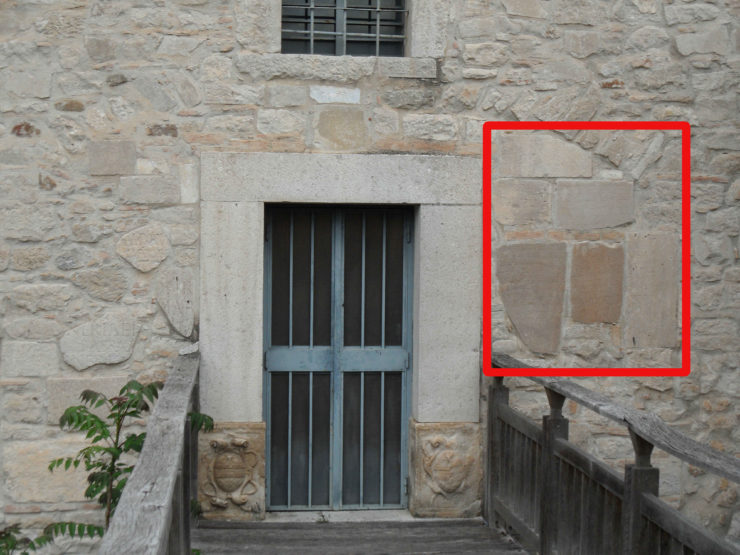
Hebrew funerary inscriptions embedded in the wall of the Santissima Trinità medieval church. More than twenty-five tombstones shared this fate.

Hebrew funerary inscriptions embedded in the wall of the Santissima Trinità medieval church (close up).
The results of the pilot project were very good, in some cases surpassing the team’s expectations. The 3D photography captured the shallow grooves in the stone much better than regular photography or the naked eye. Inscriptions that appeared almost invisible (and certainly unreadable) could now be deciphered with relative ease. The images presented below show the results of the 3D pilot project, and are included to demonstrate this.
***
A. The first steps of the pilot were conducted on Hebrew inscriptions preserved in the archaeological museum of Venosa (Museo archeologico nazionale di Venosa). The controlled conditions (light, position) facilitated capturing the 3D images and calibrating the photographic equipment.
1. Tombstone fragment bearing the Hebrew words “Here was buried”.
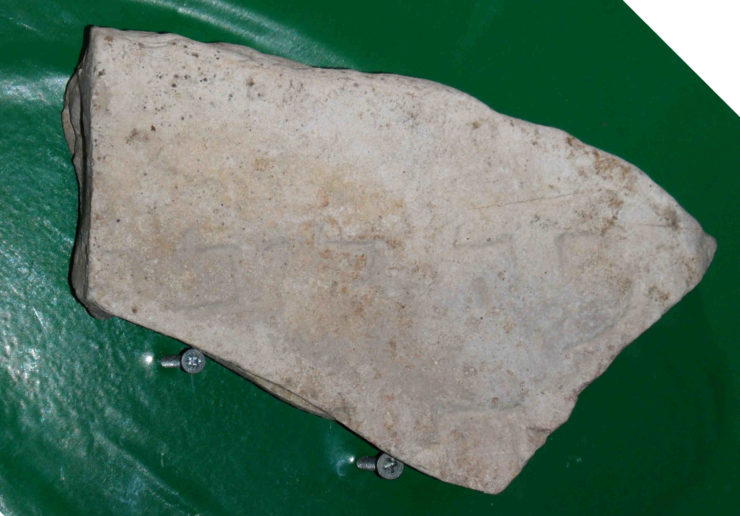
Item 1. Regular photograph.
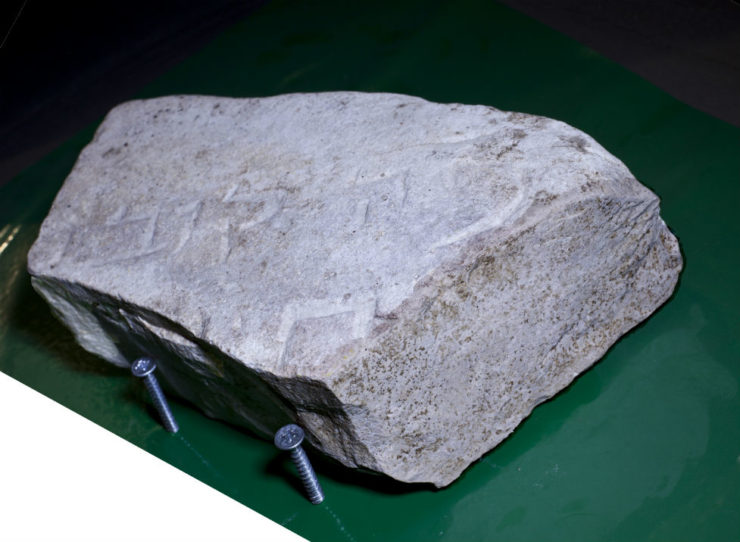
Item 1. 3D image (unfiltered).
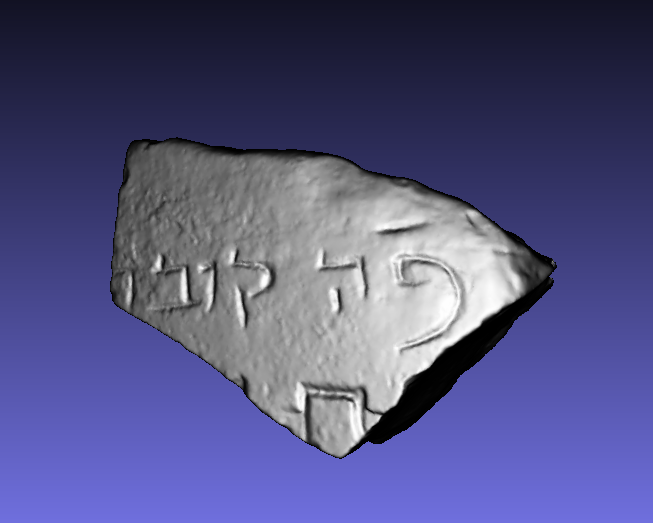
Item 1. 3D image (filtered).
2. Tombstone fragment bearing the name “Yehudah” (Judah).
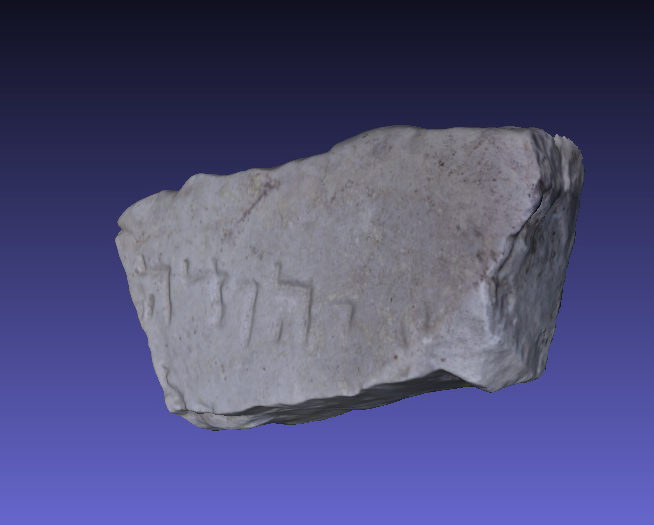
Item 2. 3D image (unfiltered).

Item 2. 3D image (filtered).
3. Complete tombstone bearing a Hebrew epitaph, commemorating a man whose name may have been Eliahu (Elijah) son of Isaiah, although it is also possible his name was actually Shlomo (Solomon), with an irregular spelling. The man died at the age of thirty, but the year of his decease is not preserved. The tombstone was found out of context in the course of archaeological excavations in Venosa, and is currently on display at the town museum.
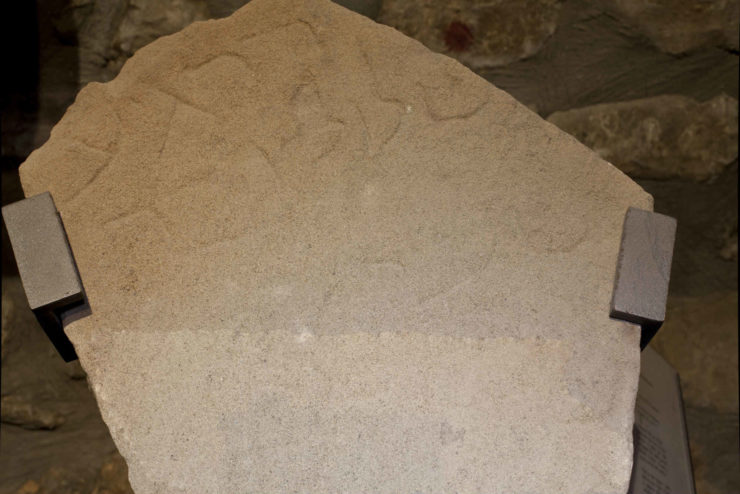
Item 3. 3D image (unfiltered).

Item 3. 3D image (filtered).
4. Nearly complete tombstone bearing a Hebrew epitaph, commemorating a little girl named Bona daughter of X (her patronym did not survive). Bona died at the age of three years and seven months, in the year 741 from the destruction of the Temple, which corresponds to 809 CE. The Hebrew text reads:
המצבה הזה הוצב על קבורת בונה בת…
שנפטרה בת שלוש שנים ושבעה ירחים
בשנת שבע מאות וארבעים ואחד
שנה לחרבן בית מקדש הקדוש
שיבנה בימינו ובימי כל ישראל
אמן
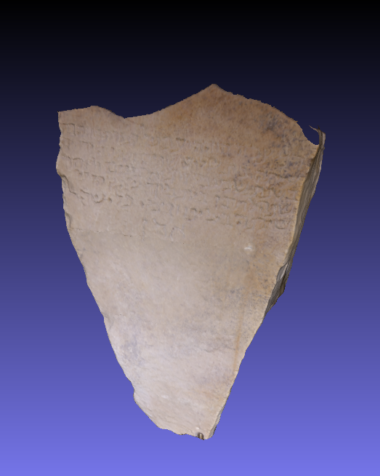
Item 4. 3D image (unfiltered).
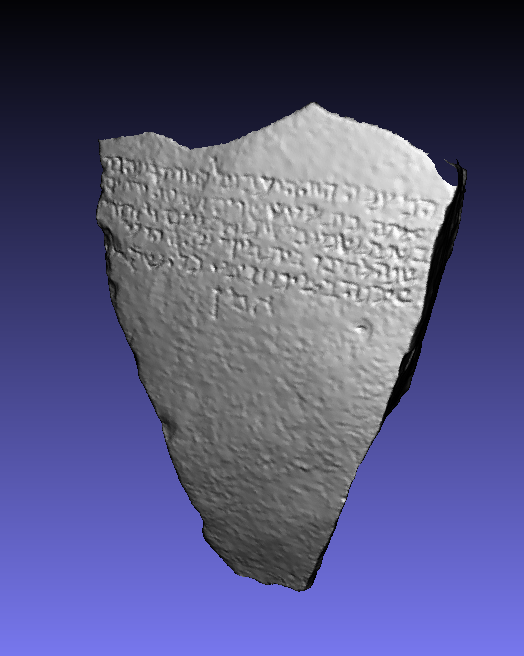
Item 4. 3D image (filtered).
***
B. The second stage of the pilot took place on the site of the medieval Santissima Trinità complex, in whose walls several dozens of Jewish funerary inscriptions have been embedded. This time the photographic process was more difficult. However, the 3D results, as well as some surprising discoveries concerning the recent fate of the tombstones proved worthwhile.
The following example illustrates the challenges in documenting the surviving Hebrew inscriptions in Venosa. Having been embedded into the walls of the ecclesiastical complex, sometimes upside down and at a great height, they cannot be easily photographed, let alone viewed from the ground. It is quite possible that more inscriptions survive than have been so far detected by scholars. A thorough survey of the Trinità walls has never been carried out.

Irmengard Meyer standing in front of the Santissima Trinità wall, with the Hebrew tombstone (marked in red) several meters above her head.
5. The name of the man commemorated in this epitaph does not survive, nor does the year of his death, which had been listed according to the destruction of the Temple. Only the wishes that the holy Temple “be rebuilt in our lifetime” and that “his soul may be bundled in the bundle of the living, [who are inscribed for life] in Jerusalem” still appear on the eroded stone.
וש… לחרבן בית המקדש
הקדוש שיבנה בימינו ובימי כל ישראל
בקרוב אמן ותהא נפשו צרורה
בצרור החיים הכתובים לחיים
בירושלים אמן
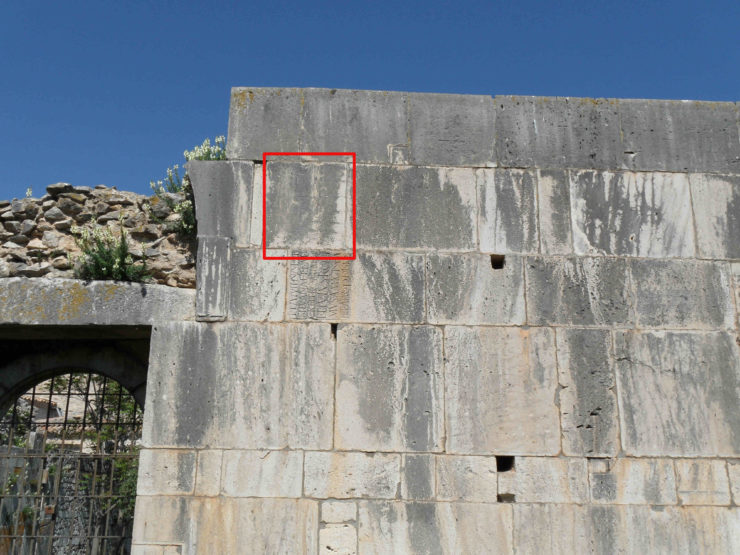
Item 5. Hebrew tombstone embedded in the wall.
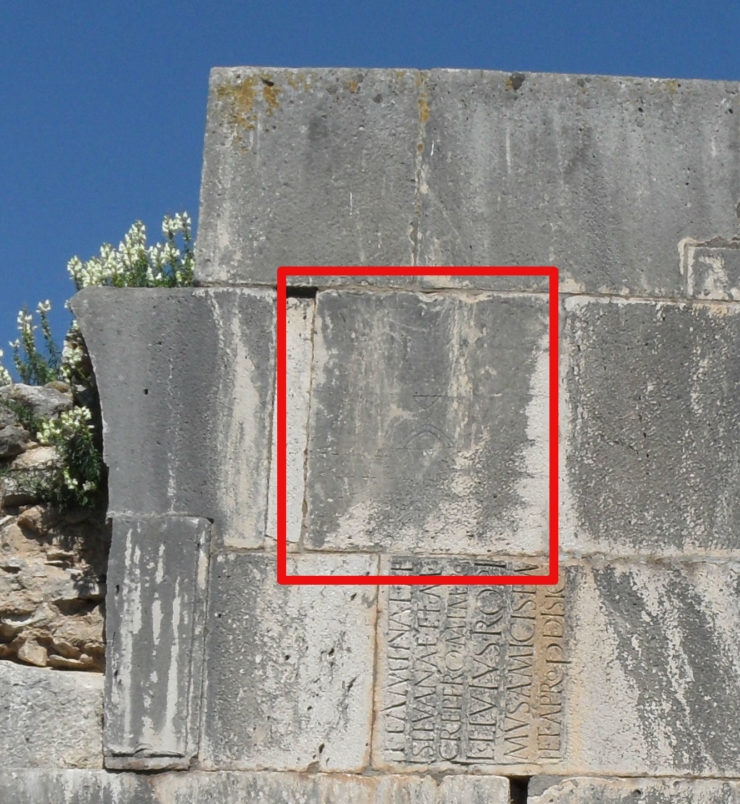
Item 5. Hebrew tombstone embedded in the wall (close up).
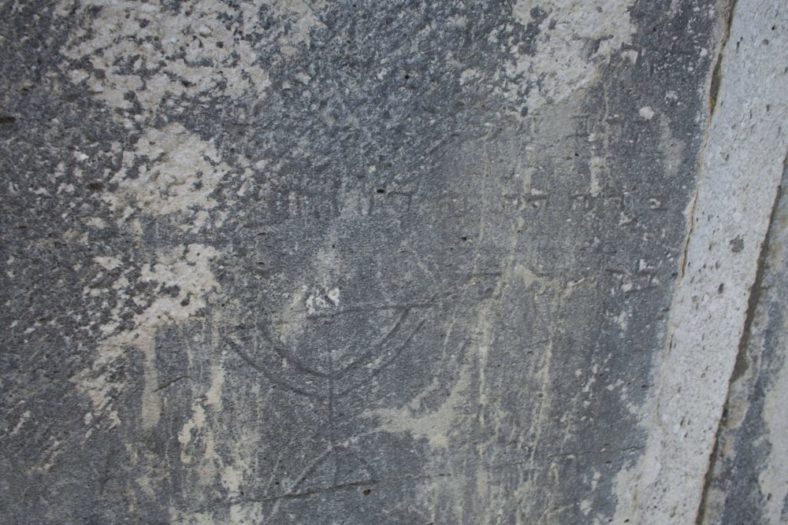
Item 5. 3D image (unfiltered).
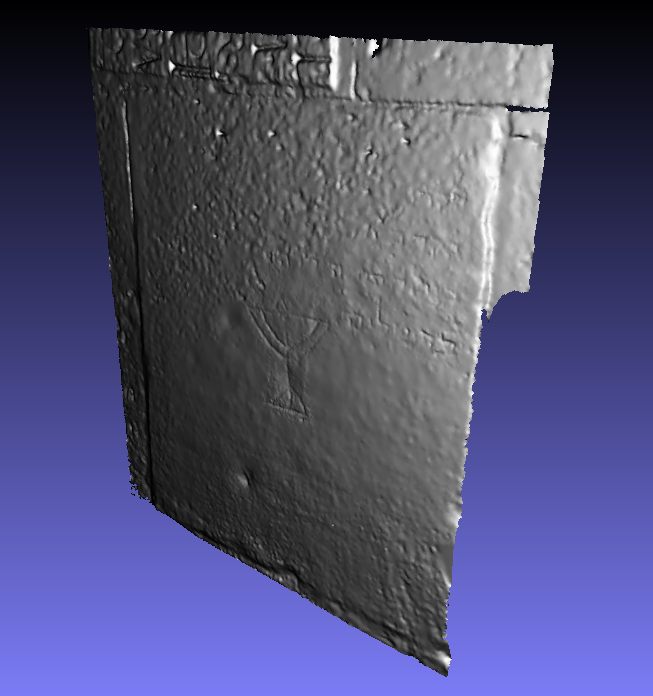
Item 5. 3D image (filtered).
6. The following epitaph commemorates a man named David son of Daniel, who died at the age of sixty, in the year 756 from the destruction of the Temple, which corresponds to 824 CE. The Hebrew inscription (including reconstruction of missing letters) reads:
הציון הלז הוקם
על קבר דויד בין
דניאל שמת מבן
ששים שנה בשנת
שבע מאות
וחמשים ושש
שנים לחרבן בית
המקדש
This tombstone has been photographed in the 1930’s by the Hungarian scholar Ernst Munkáczi, and published in his 1939 book on the Jews of Southern Italy, titled Der Jude von Neapel. Munkáczi’s photo shows David’s tombstone standing vertically on the churchyard ground, next to other Hebrew tombstones that were preserved there. But when Prof. Leonard Rutgers and his team visited Venosa in 2012, they no longer found it there. Instead, the tombstone was cemented upside down, in the top row of the churchyard wall, which has been re-erected in recent years by an unknown hand.
Item 6. Above: image from Ernst Munkáczi, Der Jude von Neapel, 1939.
Below: the tombstone of David ben Daniel as it was found in 2012.
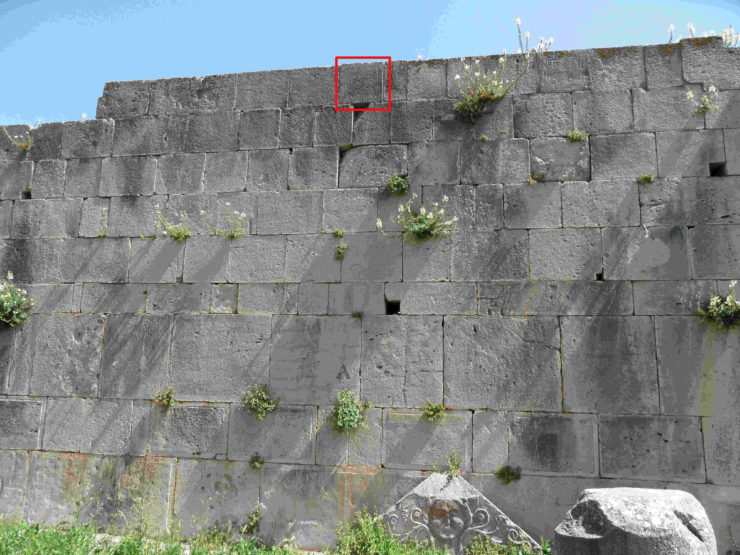
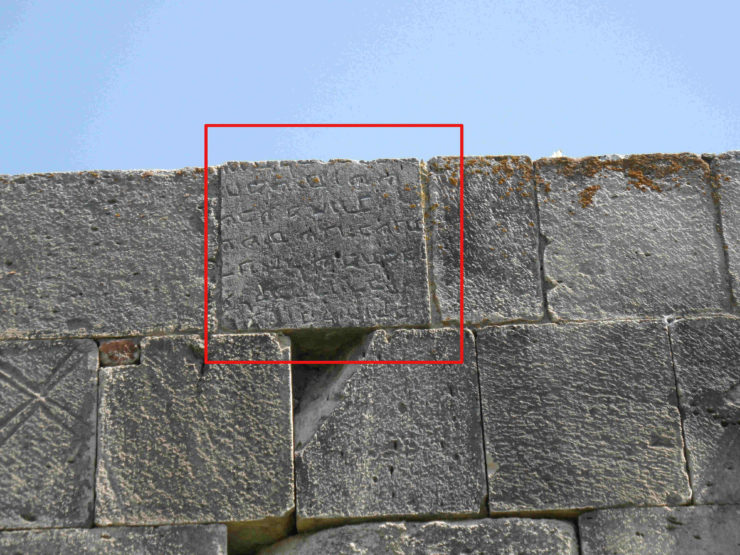
Item 6. Regular photograph.
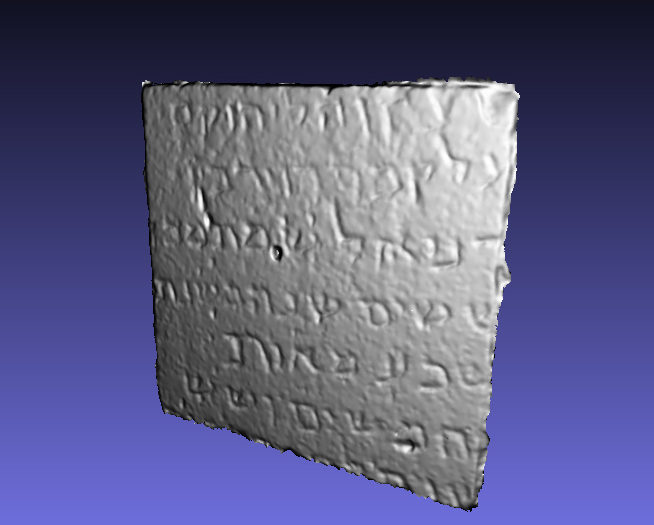
Item 6. 3D image (filtered).
7. This epitaph and the following one (item no. 8) have been engraved skilfully by the same hand, which attests to the existence of a local craftsman who specialized in stone engraving. It commemorates a man whose name has not survived, who died at the age of thirty, in the year 780 (from the destruction of the Temple), corresponding to 848 CE. He is described as “humble in the eyes of all who saw him”, and the epitaph requests the “atonement and forgiveness of all his sins”, an unusual formula in this period (see also item no. 10). Just like in the epitaph of David ben Daniel (item 6, above), also this tombstone used to stand on the churchyard ground in the 1930’s, where it was photographed by Ernst Munkáczi, but it was cemented high up into the wall at an unknown stage, by an unknown person.
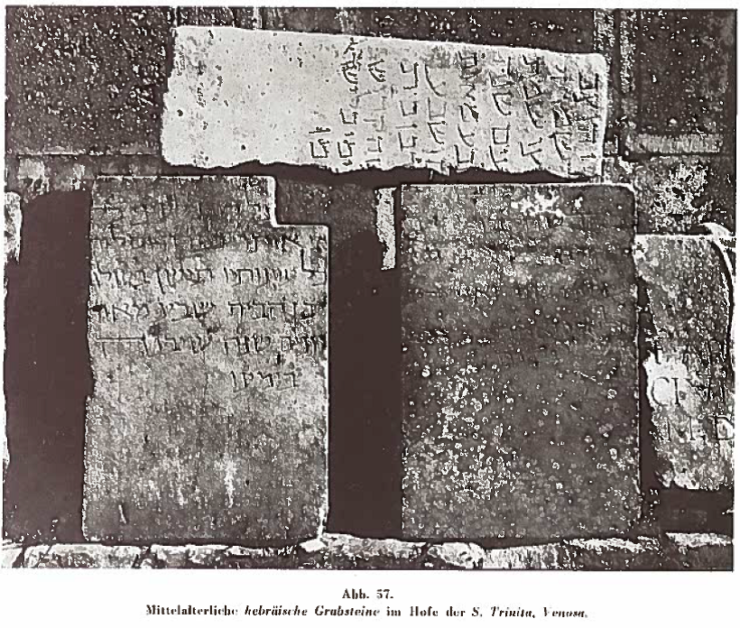 Above: Items no. 7 and 8 as photographed before 1939 by Ernst Munkáczi.
Above: Items no. 7 and 8 as photographed before 1939 by Ernst Munkáczi.
Below: Items no. 7 and 8 as photographed during the pilot project in 2012.

Two tombstones embedded in the churchyard wall.

The two tombstones (close up).
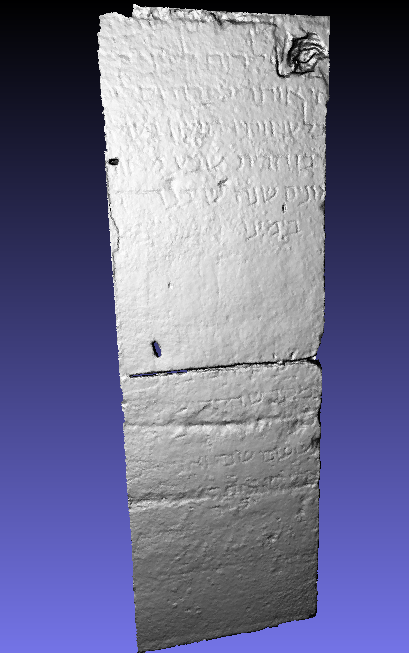
Items 7 and 8. 3D (filtered).
8. This epitaph was engraved by the same hand as item no. 7 (see images above). It is less well preserved, however, and we only know that it commemorated a man who passed away at the unusual age of ninety years. The inscription ends with a quotation from Job 19:25: “For I know that my Redeemer lives, and He shall stand at last on the earth“.
9. This epitaph was discovered by chance during restoration work in the interior of the Santissima Trinità church. The tombstone had been reused as a building block in the Middle Ages, and is now part of a church pillar. It commemorates a man whose name is now lost, but his father’s name, Iovianu, survived. The same patronym appears in other Hebrew inscriptions from this area. The date of his decease also has not survived.

Item 9 embedded in church pillar.

Item 9. Regular photograph.

Item 9. 3D image (unfiltered).
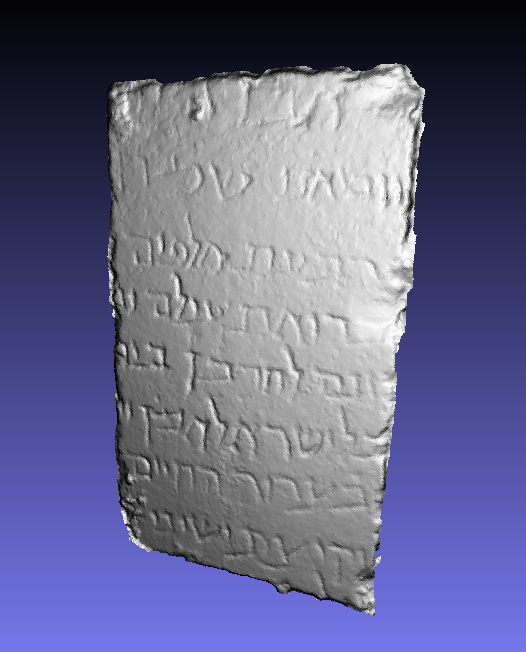
Item 9. 3D image (filtered).
10. This epitaph is currently located in the town-hall of Lavello, close to Venosa. Several decades ago, in an attempt to emphasize the letters of the inscription, someone had painted them black. The paint, having been applied coarsely and imprecisely, with no knowledge of Hebrew, actually obscures the original inscription. The 3D documentation, however, overcomes this obstacle and allows a clear view of the text. The epitaph commemorates a man named Noter son of Eliah, who died at the age of twenty-five, in the year 770 (from the destruction of the Temple), which corresponds to 838 CE.
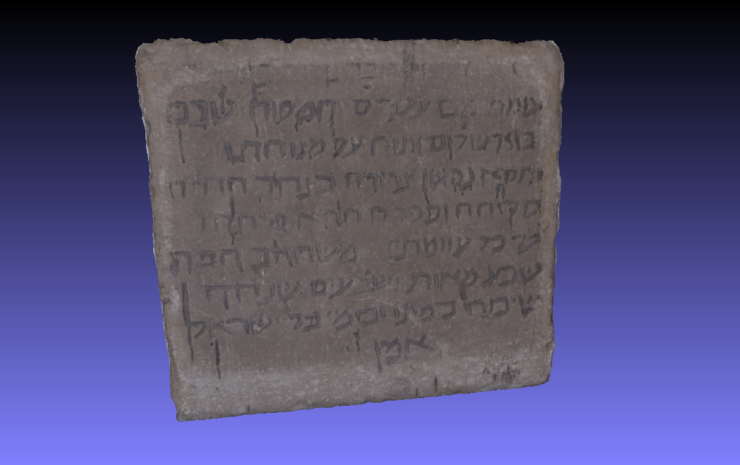
Item 10. 3D image (unfiltered).
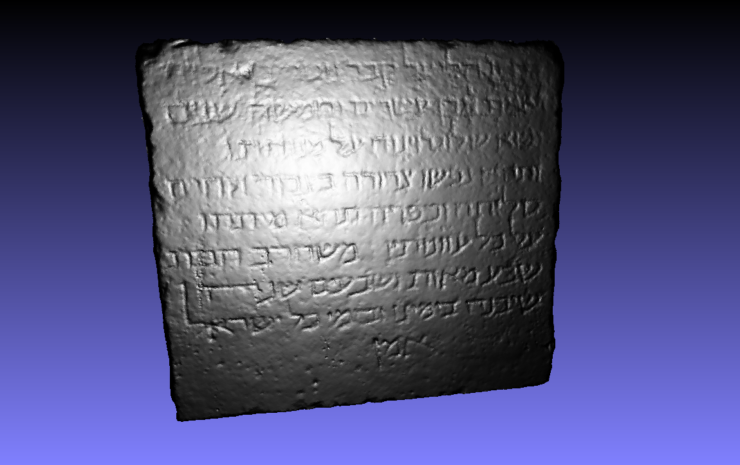
Item 10. 3D image (filtered).


